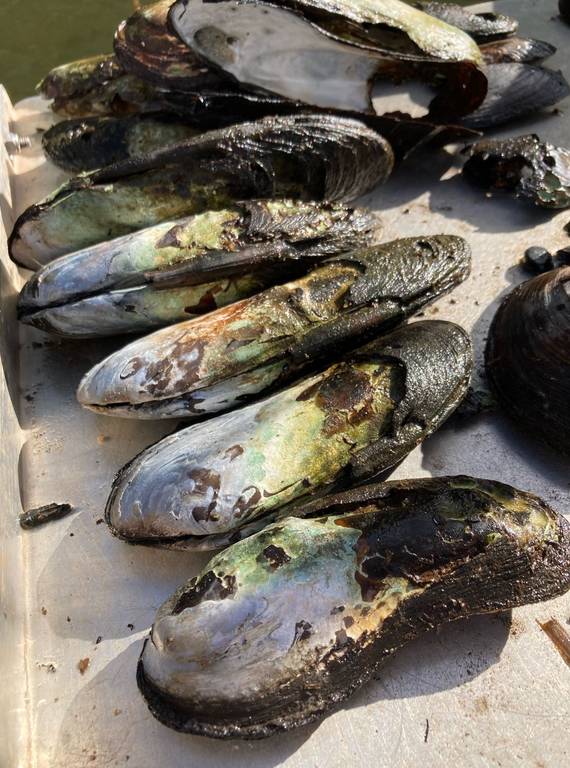Spring 2022
A River Spectacle
Endangered mussels live on (and on) in the St. Croix.
On a sun-spangled day last September, five scientists made an exciting find on the boulder-strewn bed of the upper St. Croix River. They’d been diving for several hours, surveying the depths for bivalves and scouting for the endangered spectaclecase mussel, which is found in only 20 streams from Minnesota to Alabama. After striking out at places that promised to be ideal spectaclecase habitat, the team — composed of biologists and researchers from the National Park Service, University of Minnesota and Wisconsin Department of Natural Resources — journeyed to a site where the mussels had been found in 1987. Given the mussels’ advanced age at the time, “we didn’t think they’d be there,” said Marian Shaffer, aquatic biologist at Saint Croix National Scenic Riverway. “But then, to our wonderful surprise, they were.”
Straddling the border of Minnesota and Wisconsin, the picturesque St. Croix River “has one of the most mussel-rich watersheds in the world,” according to Shaffer. The river has retained all 41 mussel species present prior to European settlement, but the construction of the St. Croix Falls Dam interrupted the life cycle of the spectaclecase mussels upstream of the structure. The mussel, which bears an uncanny resemblance to its namesake, relies on two fish species, goldeye and mooneye, to host its larvae (called glochidia). These fish haven’t inhabited the upper reaches of the St. Croix since the dam churned to life in 1907, meaning successful spectaclecase mussel recruitment there has been impossible for over a century, well beyond the mollusk’s general life expectancy.

The battered and eroded shells of the spectaclecase mussels found by the biologists give testament to their advanced age.
COURTESY OF MARIAN SHAFFER, NPSTime had clearly taken a toll on the mussels the researchers found that day. The shells were so eroded as to make determining their ages onsite (by counting their rings) impossible. “I kid you not, they looked like living skeletons,” said Shaffer, who added that “it was quite the indescribable feeling to hold them.” Taking great pains to minimize handling, the team collected data from the oblong animals and returned them to within inches of where they found them. A few empty shells were taken back to a lab where researchers will cross-section and stain them to determine their precise ages, though they undoubtedly exceed 100 years.
With the dam in place, the future of this particular spectaclecase mussel population appears bleak. But that won’t keep park staff from monitoring their health, discussing conservation options and surveying other upstream sections of the river for similarly aged specimens. Plus, St. Croix boasts a healthy population below the dam, where the mussels’ host fish flourish. “It’s the best remaining population of spectaclecase in the country, or the world,” Shaffer said. “And it’s doing very well.”
Watch this Park Service video to learn more about St. Croix’s freshwater mussels.
About the author
-
 Katherine DeGroff Associate and Online Editor
Katherine DeGroff Associate and Online EditorKatherine is the associate editor of National Parks magazine. Before joining NPCA, Katherine monitored easements at land trusts in Virginia and New Mexico, encouraged bear-aware behavior at Grand Teton National Park, and served as a naturalist for a small environmental education organization in the heart of the Colorado Rockies.



